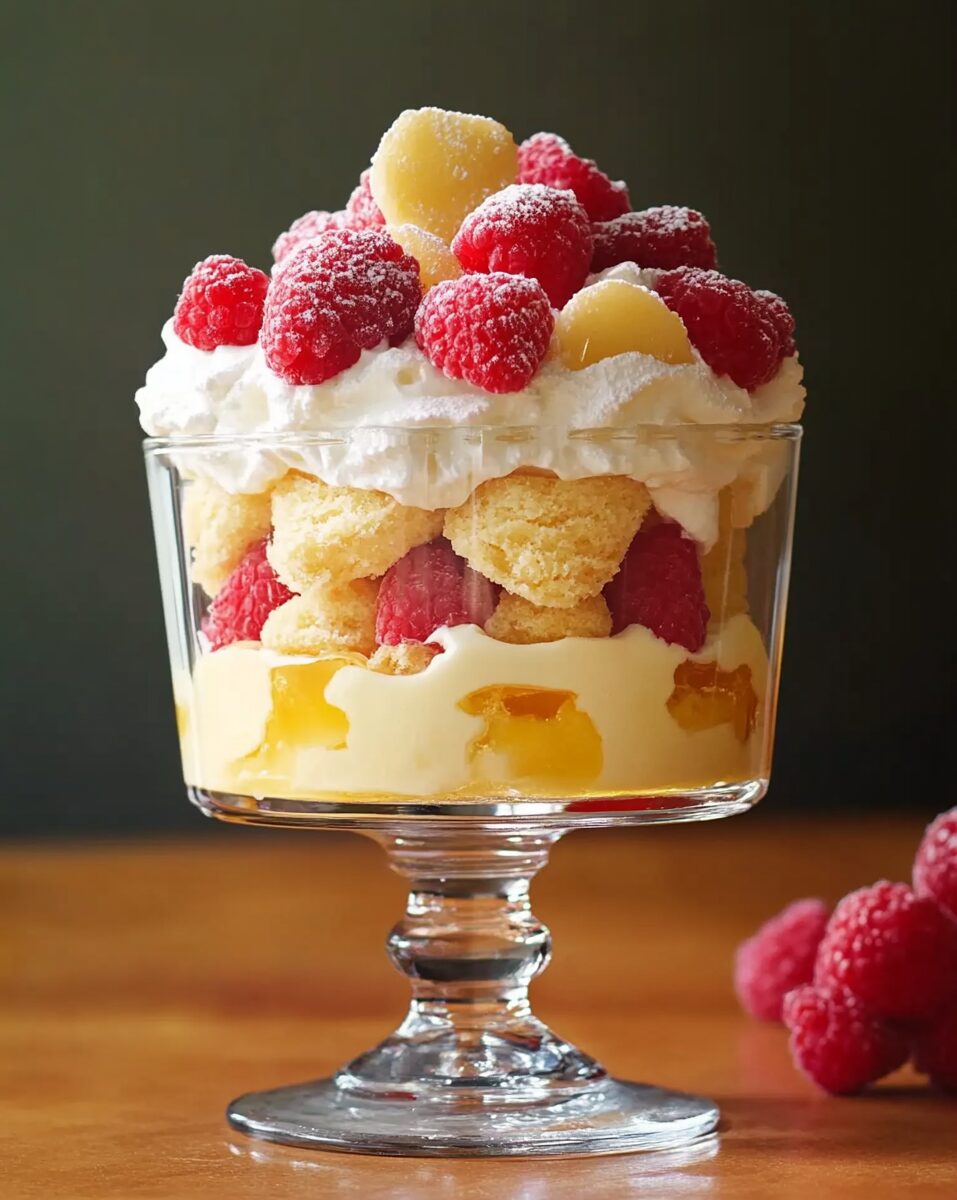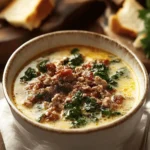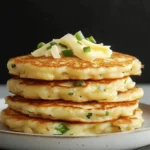English Trifle is a beloved British dessert that layers soft cake, fruit, pudding, and whipped cream into a stunningly delicious and visually appealing treat. Its combination of textures and flavors makes it a crowd-pleaser at any gathering, offering a balance of sweetness, creaminess, and fresh fruitiness in every bite.
This classic dessert is not only easy to make but also adaptable to various tastes. You can swap the raspberries for strawberries or use a different jam flavor to create your own version. Perfect for special occasions or just a sweet indulgence, this trifle is sure to impress both in taste and presentation.
Full Recipe
Ingredients:
- 1 (10.75 ounce) package prepared pound cake, cut into cubes
- 1 (10 ounce) jar raspberry jam
- 2 cups fresh raspberries
- 1 (3.4 ounce) package instant vanilla pudding mix
- 2 cups cold milk
- 2 cups heavy cream, whipped
- 2 tablespoons powdered sugar
- 1 teaspoon vanilla extract
- 1/4 cup toasted almond slivers
- Fresh mint leaves for garnish
Directions:
- Spread a layer of pound cake cubes evenly in the bottom of a large trifle dish or glass bowl.
- Spread half of the raspberry jam over the cake cubes, then scatter half of the fresh raspberries on top.
- In a bowl, whisk the instant vanilla pudding mix with the cold milk until it thickens.
- Spoon half of the pudding over the raspberry layer.
- Repeat the layers: cake cubes, raspberry jam, fresh raspberries, and pudding.
- In a separate bowl, whip the heavy cream with the powdered sugar and vanilla extract until soft peaks form.
- Spoon or pipe the whipped cream over the top of the trifle.
- Sprinkle with toasted almond slivers and garnish with fresh mint leaves.
- Refrigerate the trifle for at least 2 hours before serving to allow the flavors to meld together.
Prep Time: 20 minutes | Chill Time: 2 hours | Total Time: 2 hours 20 minutes
Kcal: 280 kcal | Servings: 8 servings
History and Origin
The English Trifle is a traditional British dessert with a history that dates back to the late 16th century. Its origins can be traced to a simple dish called “fool,” made with thickened cream flavored with sugar, rosewater, and ginger. The trifle, as we know it today, evolved over time, incorporating layers of sponge cake soaked in alcohol, fruit, and custard. By the 18th century, trifles had become more elaborate, often including ingredients like jelly, which was a popular addition to the Victorian version of the dessert.
Trifles were traditionally served at grand banquets and festive occasions, where their layered presentation added an element of visual appeal to the table. The use of sherry or other spirits to soak the cake became a hallmark of this dish, adding both flavor and a luxurious touch. The dish was considered a sign of refinement and culinary skill, as it required careful assembly and attention to detail. Over time, the trifle has become a beloved staple in British households, especially during holidays like Christmas, where it often takes center stage among the dessert offerings.
More Information
The English Trifle has undergone numerous adaptations throughout its long history. In the past, the trifle was typically made with leftover or stale cake, allowing home cooks to create a delicious dessert while minimizing waste. Today, the dish is often prepared with purpose-made sponge cake or pound cake, and the layers have expanded to include various fruits, jams, and custards, offering endless possibilities for customization. Modern versions may include fresh berries, chocolate shavings, or different flavors of pudding to suit diverse tastes.
In addition to its British roots, variations of trifle have appeared in other cultures. In Italy, the trifle-inspired dessert known as “zuppa inglese” features layers of sponge cake soaked in Alchermes liqueur, custard, and chocolate. In America, the trifle has been adapted to include popular ingredients like angel food cake, instant pudding, and whipped topping, making it a convenient and crowd-pleasing dessert for potlucks and family gatherings. Despite these variations, the essence of the trifle remains the same: a harmonious blend of textures and flavors that delight the senses.
One of the reasons the English Trifle has endured through centuries is its inherent flexibility and ease of preparation. Traditionally, the trifle was a way to repurpose leftover cake or biscuits, combining them with readily available ingredients like fruit and cream to create a lavish dessert. This made it not only an elegant dish but also a practical one, allowing cooks to avoid waste while still delivering a showstopping finale to a meal. Its layered structure means it can be prepared ahead of time, making it ideal for entertaining when you want to minimize last-minute kitchen stress.
In the Victorian era, the trifle was often featured in cookbooks and was a favorite among the upper classes. It was during this time that the addition of jelly (or gelatin) became popular, adding another layer of texture to the dish. The vibrant colors of the jelly, combined with the contrasting layers of custard, cake, and cream, made it an eye-catching centerpiece for the dining table. It was not uncommon for Victorian trifles to be quite elaborate, sometimes incorporating multiple layers of different fruits, liqueurs, and decorative toppings like slivered almonds or crystallized fruit.
Despite its historical association with more formal dining, the trifle has remained accessible and beloved by home cooks of all levels. Modern trifles often simplify the process, using ingredients like store-bought cake, instant pudding, and pre-whipped cream to make the dessert more convenient while still delicious. This accessibility has contributed to its popularity across the globe, with each region and household putting its own spin on the classic recipe. The trifle’s adaptability means it can range from a light, fruity dessert in summer to a rich, indulgent treat in winter, incorporating seasonal ingredients to suit the occasion.
Conclusion
The Classic English Trifle is more than just a dessert; it’s a culinary tradition that carries the legacy of centuries of British baking. Its layered composition, combining the sweetness of jam, the tartness of fresh berries, the richness of pudding, and the lightness of whipped cream, creates a symphony of flavors and textures that is both satisfying and elegant. The trifle’s versatility allows it to be adapted for various occasions and preferences, making it a timeless favorite.
By preparing this English Trifle, you’re embracing a piece of culinary history while also adding your unique touch to a beloved classic. Its beautiful presentation and delightful taste make it perfect for impressing guests at festive gatherings or simply indulging in a sweet treat at home. With every spoonful, you experience the harmonious blend of ingredients that has made the trifle a cherished dessert for generations. Whether you follow the traditional recipe or introduce your own variations, this trifle is sure to become a treasured addition to your dessert repertoire.






